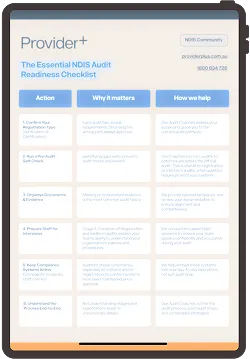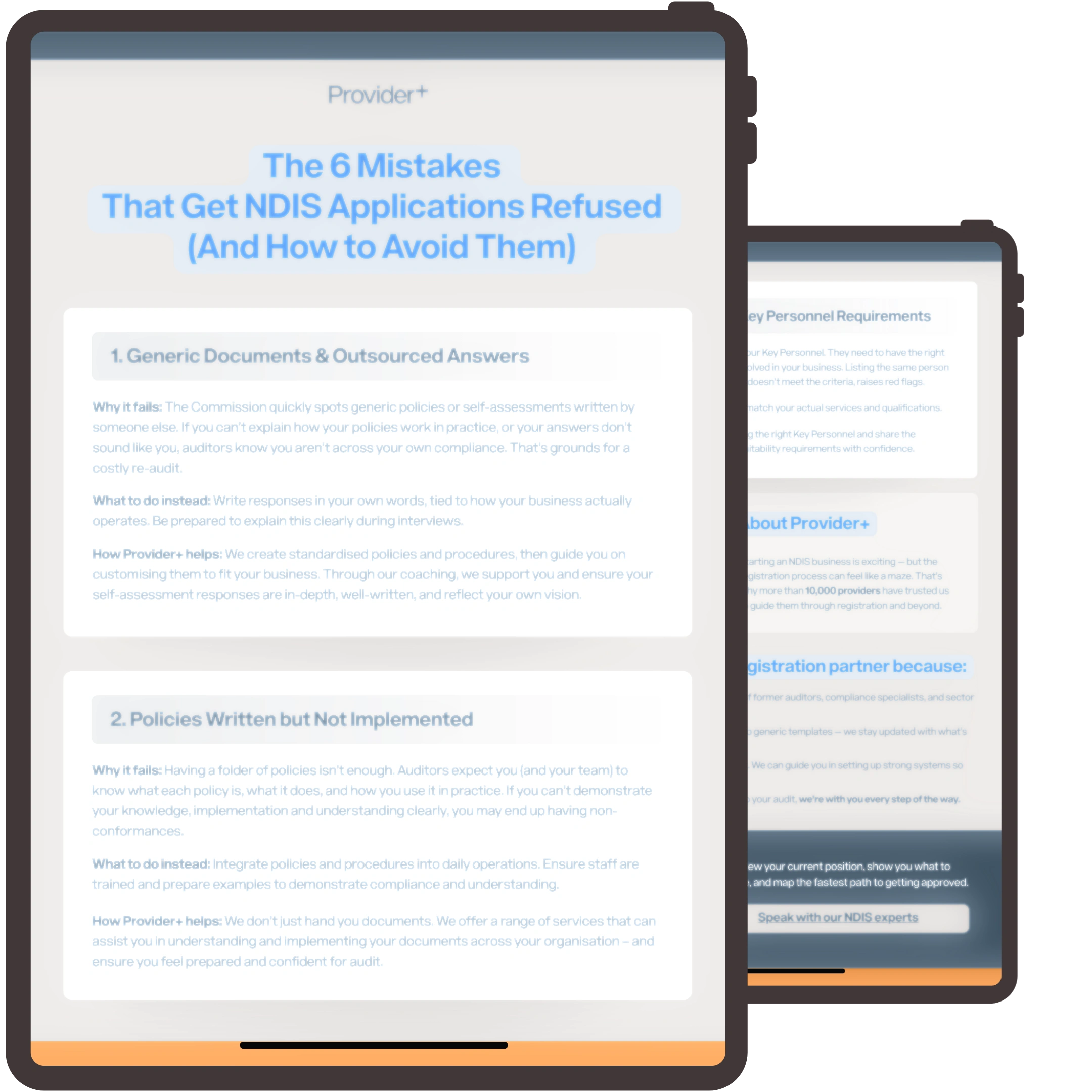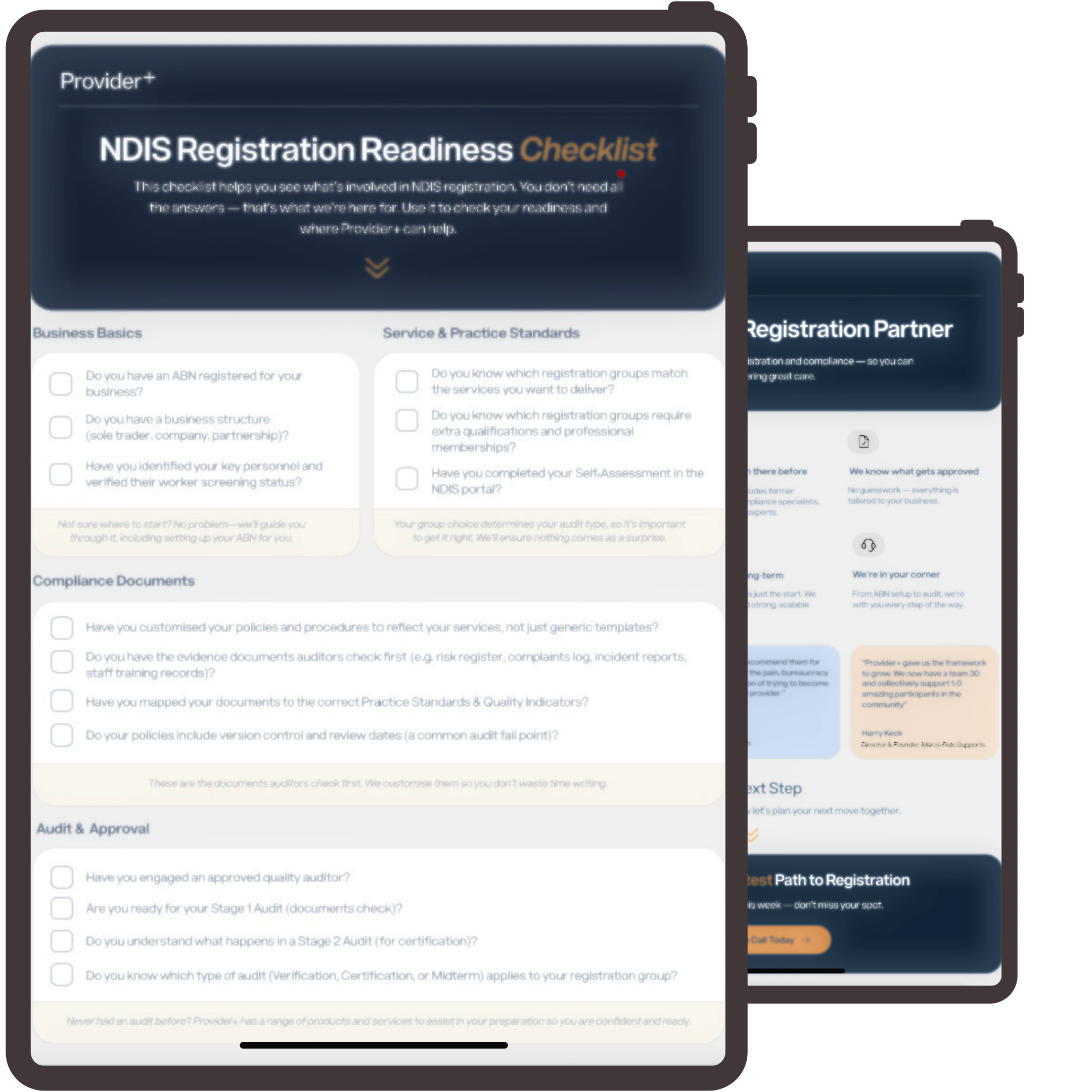Participant Emergency Preparation Plan: The Essential Guide
Prepare for any emergency with our essential Participant Emergency Preparation Plan. Ensure safety and readiness in all situations.
People with disability face increased vulnerability during emergencies and disasters, highlighting the critical need for increased awareness and proactive measures to ensure they are safeguarded during an emergency and/or disaster.
The NDIS Commission has recently issued provider alerts on Emergency Management and Fire Safety following the tragic death of a woman with an intellectual disability in a house fire. NDIS Commissioner Louise Granville emphasised the heightened risk faced by people with disability, who account for approximately 62% of fatalities in preventable residential fires.
In this article we will outline your dual responsibilities for emergency and disaster planning and will step you through your requirements to identify and mitigate risk, empower participants, ensure continuity of care, foster resilience, and ensure participants remain safe and supported even in challenging circumstances.

What are my Requirements for Emergency Planning?
NDIS Providers: Navigating Dual Responsibilities for Emergency Planning
As an NDIS provider, you play a crucial role in ensuring the safety and well-being of your participants, especially in times of crisis. It’s not just about meeting the needs of participants in everyday situations, but also about preparing for emergencies and disasters that could arise unexpectedly. Coordination with local emergency services is crucial to ensure timely and effective responses during crises. NDIS providers are tasked with a dual responsibility when it comes to emergency planning: ensuring the readiness of your business and protecting the participants you support. Both responsibilities are interlinked and essential to providing supports to NDIS participants.

1. Emergency Planning for Your Business
Emergency planning for your business is vital to be able to safely respond to an emergency and/or disaster and to maintain continuity of services during these events, such as natural disasters, power outages, or a pandemic. As an NDIS provider, you must develop a detailed and structured plan that ensures your operations can continue seamlessly even during a crisis. Regularly testing and reviewing disaster management plans ensures their effectiveness in crisis situations. This includes having clear protocols in place for communicating with your team, maintaining the safety of your premises, and ensuring that any staff absences do not impact the quality and continuity of care.
Your emergency plan should cover the following:
- Business Continuity: Outline steps to maintain operations and service delivery during an emergency.
- Staff Training and Roles: Ensure all staff are trained on emergency protocols and know their specific roles in a crisis.
- Communication Plan: Establish a clear chain of communication for all parties involved, including staff, participants, and families.
- Backup Resources: Have contingency plans for any essential equipment, resources, or services that may be impacted.
These measures help minimise disruptions, ensuring that your business can continue to provide essential services and supports even in challenging circumstances.
2. Emergency Planning for Participants
In addition to emergency planning for your business, NDIS providers must also take responsibility for the well-being of the participants they support during emergency situations. This involves creating personalised emergency plans for each participant to ensure they have access to support and are safe when emergencies arise. These plans should take into account the individual needs, preferences, and risks associated with each participant.
Key aspects of emergency planning for participants include:
- Individual Risk Assessment: Identify potential risks specific to each participant, such as mobility limitations, medical conditions, or cognitive impairments, that may affect their ability to respond to emergencies.
- Emergency Contacts: Ensure that emergency contacts, including family members, support workers, and healthcare providers, are up-to-date and accessible.
- Evacuation Plans: Develop evacuation plans tailored to the participant’s environment, including their home, work, or support services.
- Training and Communication: Educate support workers, participants and their families about what to do in the event of an emergency, including evacuation procedures, the use of medical equipment, or specific instructions to follow.
- Backup Support: Ensure there is a clear system in place for support in the event that regular services are disrupted.
Emergency plans for participants should be reviewed regularly and updated as needed to reflect changes in the participant’s needs or circumstances.
Why Both Plans Matter
The dual responsibility of emergency planning ensures that both the business and the participants you support are ready to handle crises. Having comprehensive plans in place for both aspects allows you to:
- Protect the safety and well-being of participants in emergencies.
- Minimise disruption to your business operations and continue to provide essential services.
- Foster trust with participants and their families, knowing that you are prepared for unforeseen situations.
Effective decision-making is crucial in developing and implementing these plans to ensure all potential risks are addressed.
Being proactive in emergency planning helps to mitigate risks, reduce uncertainty, and ensure a higher standard of care and safety, no matter the circumstances.
Participant Planning - Emergency Plan and Evacuation Plan - Know the Difference
Common planning processes may include the Participant Emergency Evacuation Plan (PEEP) and the Participant Emergency Preparation Plan (PEPP). It is important to understand that these two functions serve different purposes in emergency planning for participants.
The Participant Emergency Evacuation Plan (PEEP) is an individual plan tailored to each participant, containing the information needed when enacted in the event of an emergency or disaster and will include the steps to take during the emergency situation.
The Participant Emergency Preparation Plan (PEPP) is about readiness and mitigating risks before an emergency occurs and will include all information to enable a safe response during an emergency or disaster, including: emergency contacts, important participant information, participant risk factors, medication information etc. The PEPP will also incorporate procedures for evacuation.

The Importance of Emergency Planning for Participants in SIL or SDA
Emergency planning is essential for all NDIS participants, but it holds particular significance for those living in Supported Independent Living (SIL) or Specialist Disability Accommodation (SDA). These participants often have complex needs, requiring tailored support and assistance in various aspects of their daily lives. This is especially important for children and young people in these settings, who may have additional needs and require tailored support. In emergency situations, their safety and well-being depend on well-thought-out, personalised emergency plans. Here’s why emergency planning is so important for participants in SIL or SDA:
Participants in SIL or SDA often have unique medical, physical, or cognitive challenges that may make responding to an emergency more difficult. For example, those with mobility impairments might struggle to evacuate quickly, while others may rely on specific medical equipment to manage their condition. Emergency planning ensures that these specific needs and risks are accounted for, so that tailored procedures and support are in place to help participants during emergencies.
Some participants may be at higher risk of emergencies due to health conditions or living in more vulnerable areas (e.g., flood zones, bushfire-prone areas). In these cases, the provider should work with the participant to develop additional strategies, such as:
- Preparing for temporary relocation or alternative housing.
- Arranging for additional personal care support if primary caregivers are unavailable.
- Ensuring necessary medical equipment is available and functional during an emergency (e.g., backup power for life-sustaining devices).

Emergency Planning for Support Coordinators: Ensuring Participant Safety and Continuity of Care
Support coordinators play a pivotal role in the NDIS service delivery system, acting as a key link between participants, service providers, and other support networks. One of the essential responsibilities of support coordinators is ensuring that participants have a comprehensive emergency plan in place, as the support coordinator it may be your role to coordinate the emergency response for the participant. Support coordinators must also consider risks related to personal safety, such as sexual assault, when developing comprehensive emergency plans.
While each provider delivering direct support to NDIS participants is responsible for creating an emergency plan, the support coordinator plays a critical role in facilitating collaboration between the participant, service providers, and other stakeholders involved in the participant’s care. The support coordinator ensures that all parties are aware of the emergency plan and their specific roles in the event of a crisis. As a support coordinator you need to be satisfied that plans are in place to safeguard the participant during an emergency. This may include coordinating with staff at Supported Independent Living (SIL) facilities, Specialist Disability Accommodation (SDA) providers, allied health professionals, and emergency services, ensuring a quicker, more effective response during emergencies, ultimately enhancing participant safety and well-being.
.webp)
Post Emergency Support and Review
After an emergency occurs, providers must conduct a post-emergency review. This includes the participant receiving ongoing support, assisting with any emotional trauma the participant and workers may have experienced, and helping the participant to return to their normal routine as quickly as possible. It's also essential for providers to follow up with all parties involved—such as staff, family members, and emergency responders—to evaluate how the emergency was managed. This review helps identify any areas where the emergency plan can be improved to better handle future incidents, ensuring a more effective and efficient response moving forward.




































FAQs
Here is our frequently asked questions.


